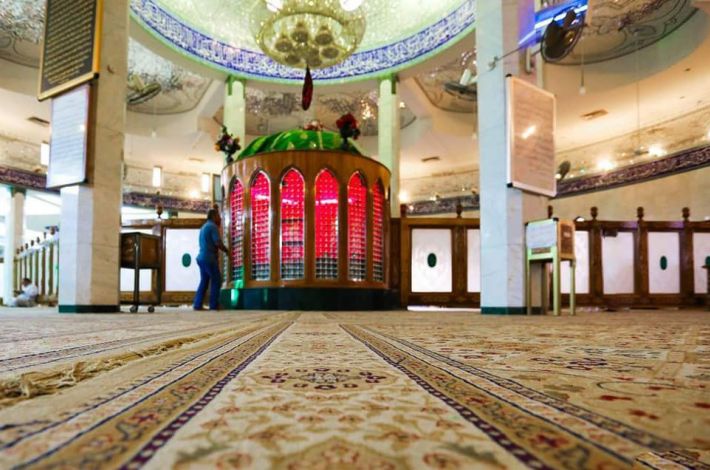The movement of the captives from the family of Imam al-Hussayn (peace be upon him), is considered the second stage of the chapters of the immortal Hussayni renaissance, without which the sacrifices and efforts of the master of the martyrs; Aba Abdillah Al-Hussayn (peace be upon him) and his family and companions (may God be pleased with them), would be forgotten. This stage which chapters began after his martyrdom (peace be upon him) and that when Ibn Saad took the children and women from Al-Hussayn's family (peace be upon him), all of them riding naked camels without saddles or Hawdaj, like they used to do with the captives of the Turks and the Romans, and that is in the most severe calamities.
The scholar Ibn Shahr Ashub al-Mazandrani said in (Virtues of the family of Abi Taleb): “Among his virtues - that is, Imam Al-Hussayn, peace be upon him - appeared from the scenes that are called the scene of the head or other names, from Karbala to Ashkelon, and what is between them in Mosul, Nusaybin, Hama, Homs, Damascus and so on.
There are scenes built in sites where the procession of the captives of the House of the Messenger of God (may God’s prayers be upon him and his family) took place on its way from Karbala to Kufa and then on the road from Kufa to Damascus in the Levant. And among those scenes that remain visible to this day is the Al-Hanana mosque. When the procession of the captives arrived to the outskirts of Kufa on the night of the twelfth of Muharram, it stayed there and did not enter Medina, because Ubaydallah bin Ziyad was keen that their entry into the city would be a show of soldiers, weapons and adornments.
The mosque or Maqam al-Hanana is located northeast of "Najaf" to the left of the person going to "Kufa". It is well established that in the past it was a “qaim”, meaning a monument built vertically at the place where the head of Imam al-Hussayn (peace be upon him) was deposited before the procession of the captives entered Kufa.
Al-Muhaddith al-Qummi said in (Nafs al-Mahmum): On the back of Kufa, there is a mosque called the Hanana Mosque, in which it is desirable to perform the Ziyarat of al-Hussayn (peace be upon him), because his head (peace be upon him) was placed there.
Al-Mufid, Sayyid [Ibn Tawoos] and Shahid [the First] said in the chapter on Visiting the Commander of the Faithful (may God’s prayers be upon him): If you reach the flag - which is the Hanana - pray there two rak'ahs. Muhammad ibn Abi Umair narrated that Mufaddal bin Omar said: Imam as-Sadeq (peace be upon him) passed by the "Qa'im" [column] that was tilted in the al-Ghuriy path and prayed two rak'ahs, and he was asked: What is this prayer? He said: This is the location of the head of my grandfather al-Hussayn son of Ali (peace be upon them both).
And Al-Hanana Mosque is one of the great mosques of great importance. It is blessed and visited by many believers, and it is one of the three places where Imam Jaafar as-Sadeq (peace be upon him) prayed.
As for the name "al-Hanana": it is a word derived from nostalgia, when the captives from the family of Imam al-Hussayn (peace be upon him) passed the place of the thwiya (a hill near a hill near the tilted Column called al-Hanana, and there are graves for the closest friends of the Commander of the Faithful (peace be upon him), including the shrine of the companion Kumayl bin Ziyad - may God be pleased with him - ), As they tampered with his holy head as well as the heads of his companions, and thus voices of nostalgia came out in anguish over what happened to them. The word is os Arabic origin, and it may come from compassion for it: that is, compassion, tenderness: mercy, or the word is derived from the word "Hanna" and "Hanna" An ancient Christian monastery was one of the monasteries of al-Hirah, which was located in the same location of the mosque, and the word developed from “Hanna” to “Hanana” over time, and the Monastery of “Hanna” was built by al-Mundhir al-Awwal Ibn al-Nu'man I, who ruled between 418 - 462 AD, and was a great monastery in His days.
